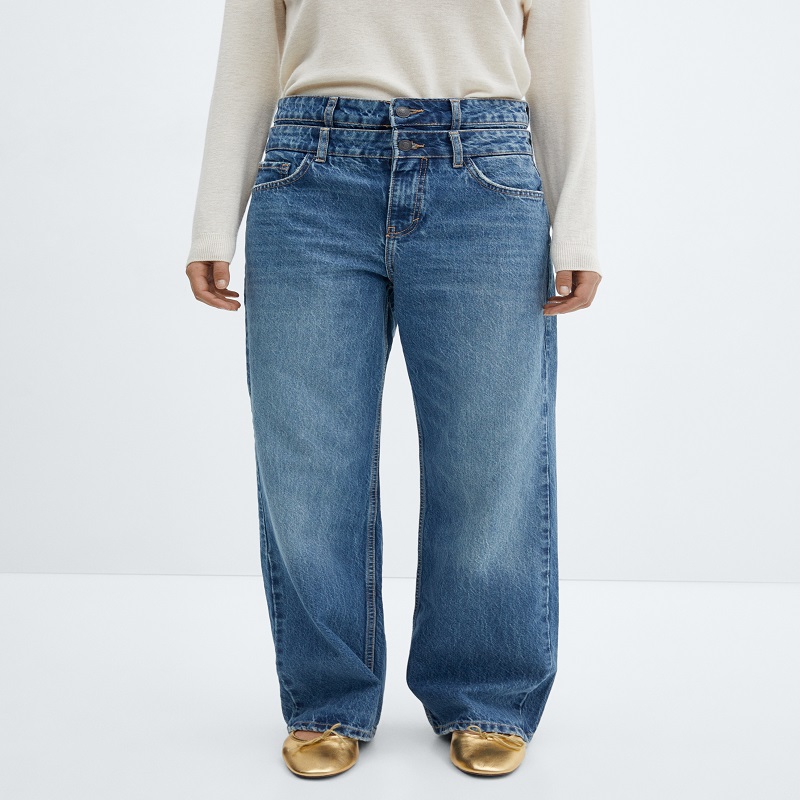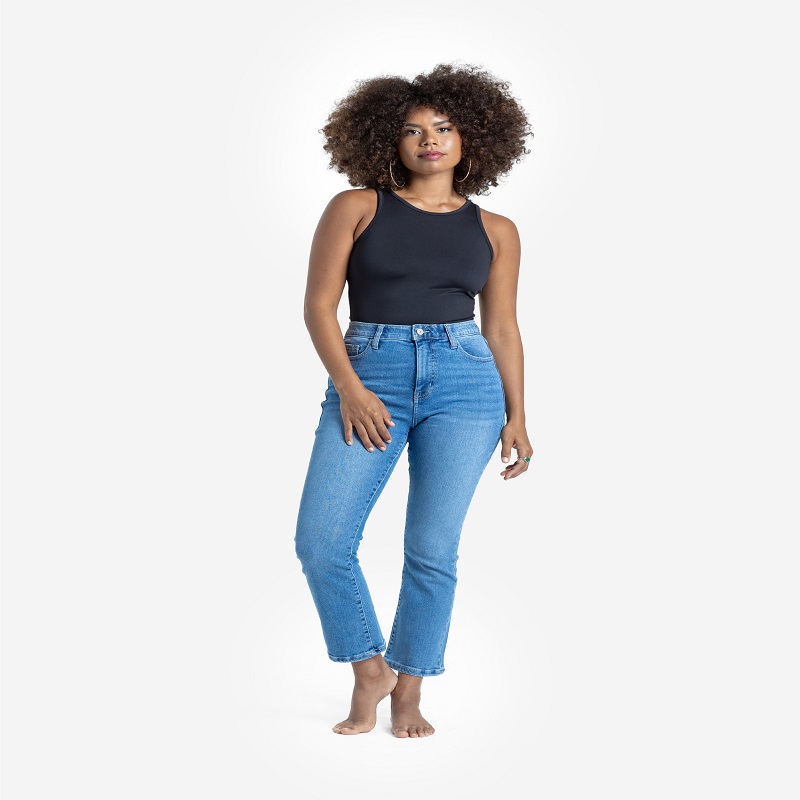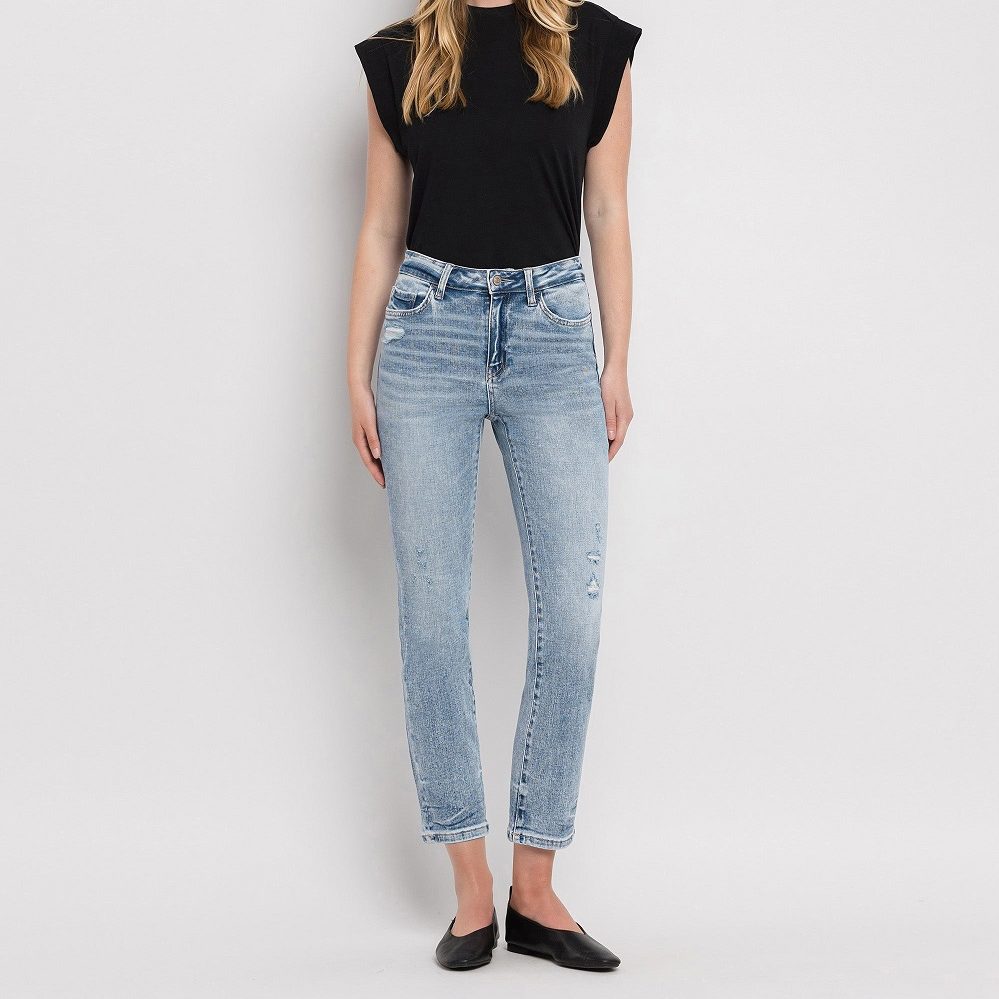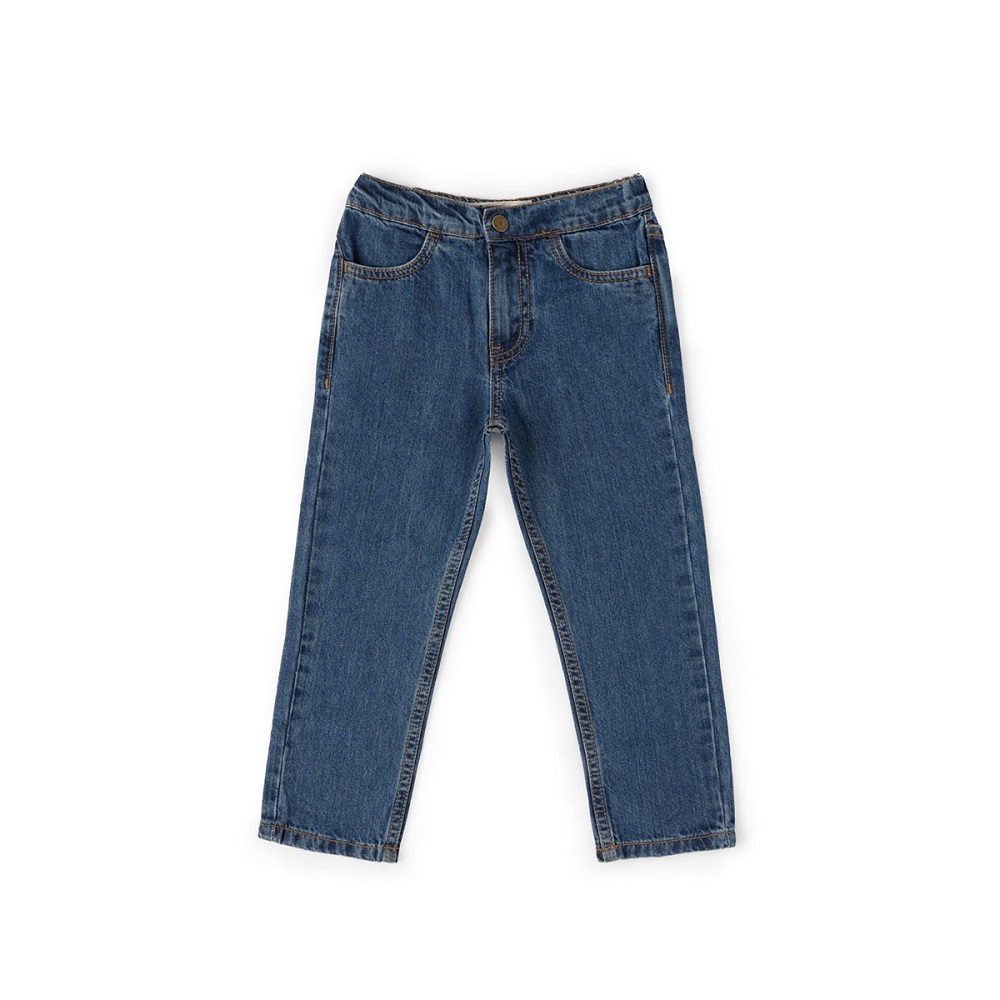How to take in jeans? Jeans are a wardrobe staple for many people, but finding the perfect fit can be a challenge. If you have a pair of jeans that are slightly too big or just don’t fit quite right, taking them in can be a great way to salvage them and make them more comfortable and flattering. Whether your jeans are too big in the waist, hips, or legs, there are several ways to take them in to achieve a better fit. In this guide, we’ll explore various methods for taking in jeans and provide step-by-step instructions for each.
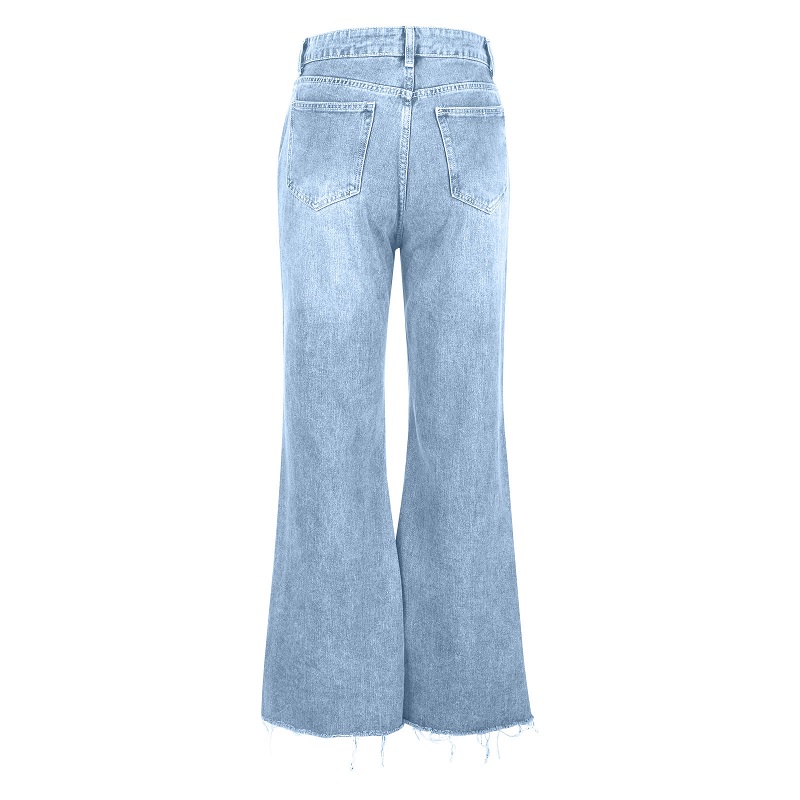
Assessing the Fit
Before you begin taking in your blue jeans, it’s important to assess the fit and determine where adjustments are needed. Try on the jeans and pay attention to areas that are too loose or baggy. Common areas for adjustments include the waist, hips, and legs. Once you’ve pinpointed the areas that need to be taken in, you can decide which method will work best for your specific needs.
Taking in the Waist
If your jeans are too big in the waist, there are a few methods you can use to take them in. One option is to add darts to the back of the waistband. To do this, turn the jeans inside out and pinch the excess fabric at the waist to create small folds. Sew along the folds to create darts, and trim any excess fabric. Another option for taking in the waist is to add elastic to the back of the waistband. Measure the amount of excess fabric at the waist, and cut a piece of elastic to that length. Sew the elastic to the inside of the waistband, and your jeans will have a snugger fit.
Taking in the Hips
If your jeans are too big in the hips, you can take them in by sewing a new seam along the outer edge of the existing seam. Turn the jeans inside out and put them on. Pinch the excess fabric at the hips to create a new seam line, and mark it with a fabric pen. Sew along the new seam line, and trim any excess fabric. This method will create a more tapered fit through the hips and thighs, giving your jeans a more tailored look.
Taking in the Legs
To take in the legs of your jeans, you can taper them using a sewing machine. Turn the jeans inside out and put them on. Pinch the excess fabric at the outer seams of the legs to create a new seam line, and mark it with a fabric pen. Sew along the new seam line, tapering the legs gradually until you reach the desired fit. Trim any excess fabric, and press the new seams flat. This method will give your jeans a slimmer, more tailored look.
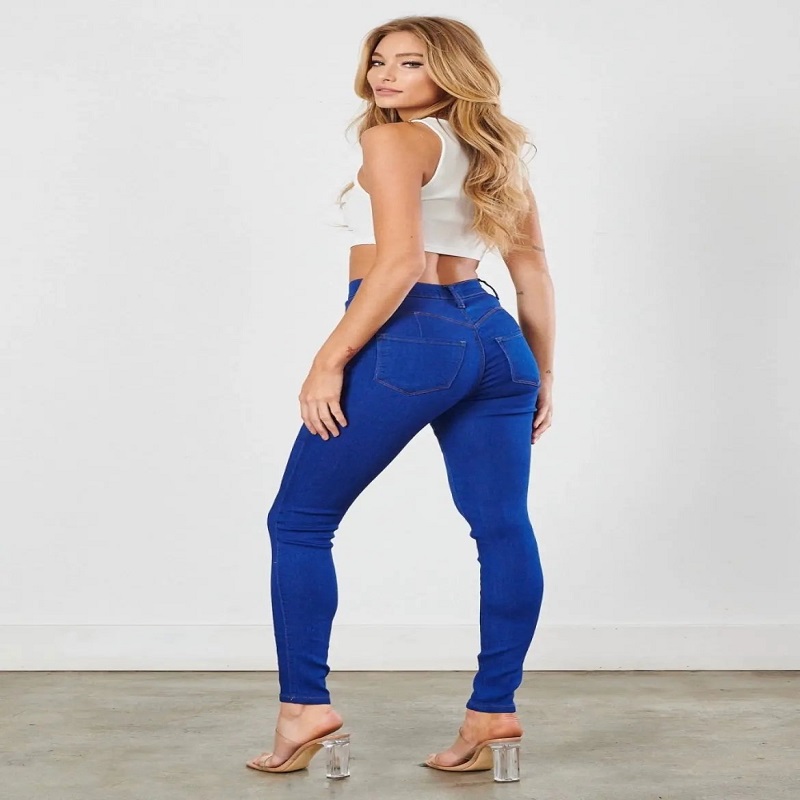
How to clean women’s jeans
Women’s jeans are a wardrobe staple and can be worn for a variety of occasions. Whether you’re wearing them for a casual day out or for a night on the town, it’s important to keep them clean and looking their best. However, with regular wear, jeans can accumulate dirt, oils, and odors, making it necessary to clean them regularly
Pre-treating Stains
Before washing your jeans, it’s important to pre-treat any stains to ensure that they are fully removed during the wash cycle. To pre-treat stains on your button on jeans, start by turning them inside out and identifying the stained areas. For food or grease stains, apply a small amount of dish soap to the area and gently rub it in. Allow the dish soap to sit on the stain for a few minutes before rinsing it with cold water. For tougher stains, you can also use a stain remover spray or gel and follow the instructions on the product label.
Machine Washing
Once your jeans are pre-treated, it’s time to wash them. To maintain the color and shape of your jeans, it’s best to wash them in cold water. Turn your jeans inside out and place them in the washing machine. Add a small amount of mild detergent to the machine and select the delicate or gentle cycle. Avoid using bleach or harsh detergents, as these can cause fading and damage to the fabric. After the wash cycle is complete, remove the jeans from the machine and hang them to air dry, or tumble dry on a low setting.
Hand Washing
If you prefer to hand wash your jeans, fill a basin or sink with cold water and add a small amount of mild detergent. Submerge the jeans in the soapy water and gently agitate them to loosen any dirt or debris. Allow the jeans to soak for 15-30 minutes before rinsing them with cold water. Gently squeeze out any excess water and then lay the jeans flat on a clean towel to air dry.
Drying and Ironing
After washing your jean, it’s important to properly dry and, if necessary, iron them to ensure they maintain their shape and appearance. To dry your jean, you can either hang them on a clothesline or lay them flat on a clean towel. Avoid putting them in the dryer, as this can cause shrinkage and damage to the fabric. If your jean are wrinkled after washing, you can iron them on a low setting using a pressing cloth to protect the fabric.
Storage and Care Tips
To keep your jeans in great condition, it’s important to store them properly and follow some care tips. When not wearing your jean, hang them in a closet or fold them neatly to prevent creasing. Avoid over-washing your jean, as this can cause them to fade and lose their shape. If your jeans start to lose their shape, you can refresh them by spraying them with a fabric refresher and gently stretching them while they’re damp. Additionally, avoid exposing your jean to direct sunlight for prolonged periods, as this can cause fading.

Advantages of jeans women
Comfort and Fit
One of the primary advantages of women’s jeans for packing is the comfort and fit that they offer. Unlike other types of pants, jeans are typically made from thick, durable denim fabric that provides a snug and comfortable fit. Additionally, the stretch denim material used in many modern jeans allows for a greater range of movement, making them ideal for various activities such as walking, running, or simply lounging around. The versatility of jeans in terms of comfort and fit is what makes them a perennial favorite among women of all shapes and sizes.
Versatility
Another advantage of women’s jean is their versatility. Jean can be dressed up or down, making them suitable for a wide range of occasions. Whether you are heading to the office, meeting friends for brunch, or going on a casual evening out, there is a jean style to suit every event. From bootcut to skinny, high-waisted to low-rise, there is a style of jean to fit any body shape and personal style. The ability to easily transition from day to night with a simple change of top or accessories makes jean a versatile and practical choice for women.
Conclusion
Taking in jean can be a simple and effective way to achieve a better fit and extend the life of your favorite denim. By assessing the fit and pinpointing areas for adjustment, you can determine which method will work best for your specific needs. Whether you need to take in the waist, hips, or legs, there are several methods you can use to tailor your jean to your liking. With a few basic sewing skills and some patience, you can give your jean a new lease on life and enjoy a more flattering and comfortable fit.
